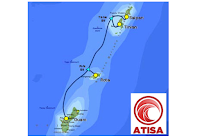Cavium announced support for the OpenSwitch open source network operating system (NOS) on Cavium XPliant switches. Additionally, Cavium introduced Open APIs for the XPliant Programmable Switch (OpenXPS) open source software.
OpenSwitch is an open source, community-led Linux-based network operating system, launched by Hewlett Packard Enterprise and other industry leaders in October 2015, optimized for the scale and architecture requirements of modern next-generation data center networks. It enables a developer ecosystem with the ability to accelerate innovation and realize investment protection, allowing IT organizations to rapidly build data center networks customized for unique business applications.
“Cavium’s support of OpenSwitch is another example of expanding the open source community effort,” said George Tchaparian CEO Edgecore Networks. “Cavium’s OpenXPS support for these open initiatives including OpenSwitch, SAI, and ONL enables rich ecosystems of differentiated solutions, including those open software options on the Cavium’s XPliant based Edgecore AS7500-32X switch, an open hardware design contributed to the Open Compute Project (OCP).”
OpenXPS APIs map the XPliant Software Development Kit (XDK) rich feature-set to an open software interface enabling integration of custom applications on the extensible XPliant switch hardware platforms. Users now have more freedom to select their software control plane in disaggregation with the hardware, boosting application innovation. OpenSwitch can now use OpenXPS APIs to control the XPliant switch hardware platforms, leveraging a high degree of extensibility.
Cavium is demonstrating OpenFlow and OpenFlow-Hybrid Ethernet switches based on its new XPliant silicon.
Cavium's XPliant Ethernet switches deliver full line rate support in OpenFlow through XPliant's SDK APIs and integration of Open vSwitch (OVS) at an aggregate switching capacity of 3.2 terabits per second.
"Historically, large scale data center customers were only interested in the speeds and feeds of networking silicon. Now customers are looking for standards based vendor interoperable features that enable them to effectively control their networks, scale and grow over time," said Eric Hayes, VP/GM, Switch Platform Group at Cavium. "The XPA architecture is the ideal solution available today with all of these capabilities simultaneously in a cost effective manner."

Cavium noted its XPliant packet architecture XPA Software APIs expose the OVS control abstractions, enabling users to benefit from OVS rich management and networking features, such as L2 pipeline (VLANs, LAGs, FDB, STP etc.), bonding modes (LACP), and advanced tunneling protocols (Geneve, VxLAN, NVGRE) as well as future yet-to-be-defined standards. Now, through XPA Software and APIs, these open and industry proven features can be seamlessly invoked representing a truly hybrid switch optimized for virtualized environments, in a single hardware.
http://www.cavium.com The FlexE Implementation Agreement provides a generic mechanism for supporting a variety of Ethernet MAC rates that may or may not correspond to any existing Ethernet PHY rate. This includes MAC rates that are both greater than (through bonding) and less than (through sub-rate and channelization) the Ethernet PHY rates used to carry FlexE.
The FlexE Implementation Agreement provides a generic mechanism for supporting a variety of Ethernet MAC rates that may or may not correspond to any existing Ethernet PHY rate. This includes MAC rates that are both greater than (through bonding) and less than (through sub-rate and channelization) the Ethernet PHY rates used to carry FlexE.













